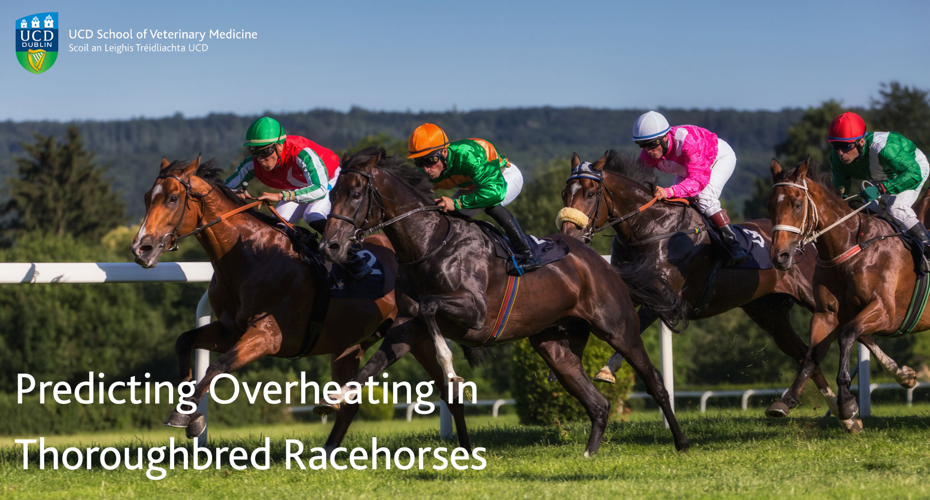
Hotter, more humid weather conditions and a history of overheating may be factors in predicting whether a Thoroughbred racehorse will suffer an incident of exertional heat illness (EHI), according to new research by Professor Siobhan Mullan, Professor of Animal Welfare & Veterinary Ethics at the UCD School of Veterinary Medicine, Dr Leah Trigg from the (opens in a new window)University of Bristol Veterinary School and colleagues at the (opens in a new window)British Horseracing Authority. 'Risk factors for, and prediction of, exertional heat illness in Thoroughbred racehorses at British racecourses' has been published in (opens in a new window)Scientific Reports, an open access journal publishing original research from across all areas of the natural sciences, psychology, medicine and engineering.
The findings, based on data from British racecourses, could be used to reduce the risk of racehorses experiencing EHI, particularly given the warming climate and more frequent hot race days. When racing, Thoroughbred racehorses can become vulnerable to overheating due to their exertions, which can occasionally lead to exhaustion and even death in extreme cases. Racing authorities around the world, particularly in hotter countries such as Japan and Australia, have investigated the factors that can lead to EHI, but so far there is no conclusive evidence to predict which racehorses may overheat.
Professor Mullan and colleagues examined data on 704,434 runners at British racecourses recorded in the British Horseracing Authority database between July 2010 and April 2018. There were 702 EHI incidents (defined in the database as either heat stress or heat exhaustion), equating to 0.1% of runners. The authors modelled the probability that a racehorse would present with EHI based on factors including age, whether the horse had had a previous EHI incident, race distance, race start time, ground conditions (going), average temperature in the five days prior to a race, and a measure of weather conditions (based on temperature, humidity, windspeed, and solar radiation) called wet bulb globe temperature index (WBGT).
Overall, the model correctly predicted 83.5% of EHI events, although the authors cautioned it produced a high number of false positives. Race distance increased the probability of EHI – the chance of a horse developing EHI in a two mile race was 5.66 times higher than in a one mile race. WBGT was also a predictive factor, with a horse running when it was 30 degrees Celsius 10.14 times more likely to develop EHI than a horse running at 20 degrees. However, higher temperatures during the five days preceding a race were associated with reduced risk of EHI – the odds of EHI were 0.33 times lower when the preceding temperature averaged 25 degrees compared to 15 degrees. This suggests that horses may acclimatise to ongoing warmer temperatures and lose heat more effectively when they come to race. Horses that had experienced previous EHI incidents were 18.59 times as likely to present with EHI, compared to horses who had not experienced EHI previously. Running on soft or heavy ground or in races before 5pm also increased the risk of EHI.
The authors suggest that racecourse officials should monitor WBGT at race meetings to help decide whether racing should go ahead, or if it does go ahead whether additional resources such as extra cool down areas should be provided. This data should be used to develop evidence-based policy to protect the welfare of racehorses in current and future climates.
The paper can be accessed here: (opens in a new window)https://www.nature.com/